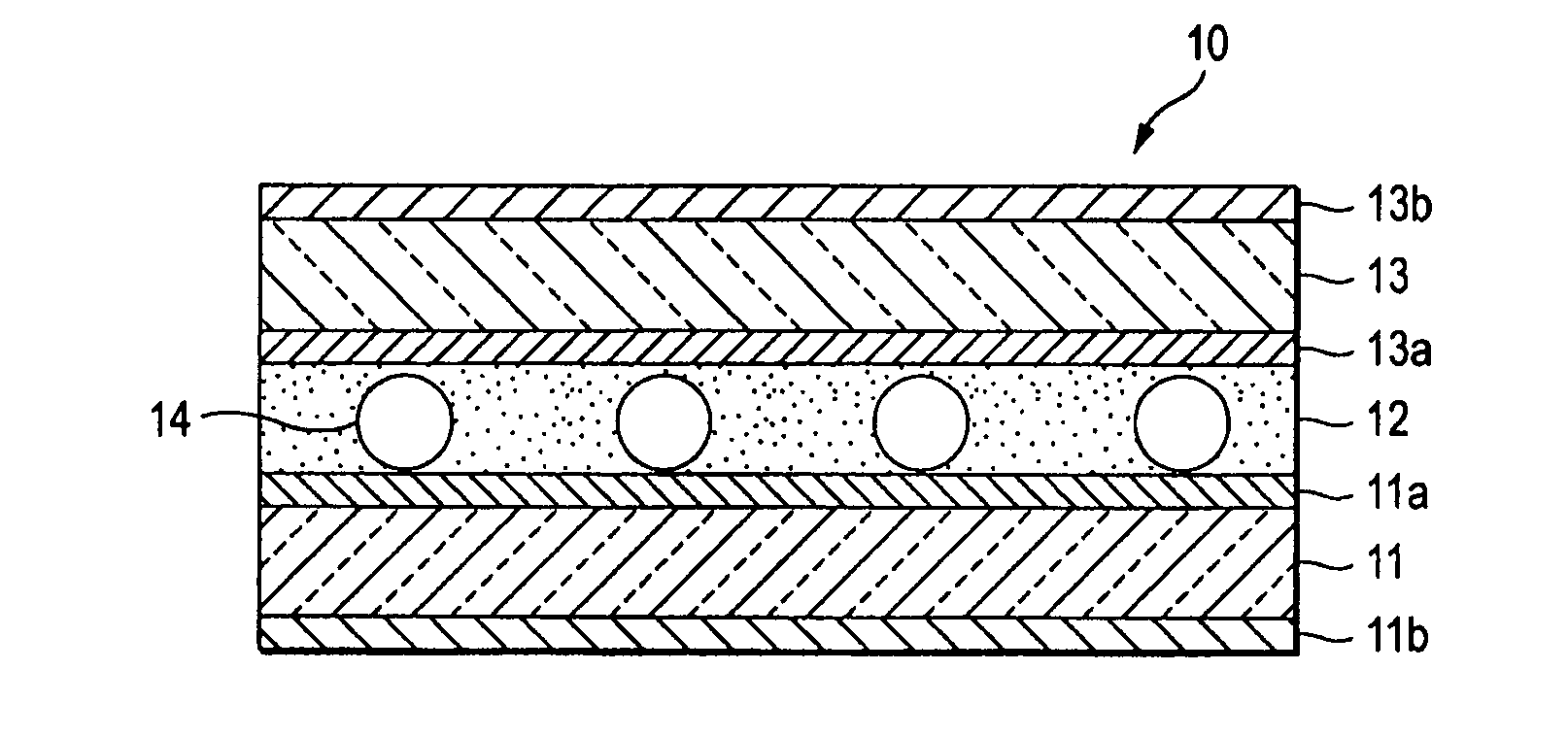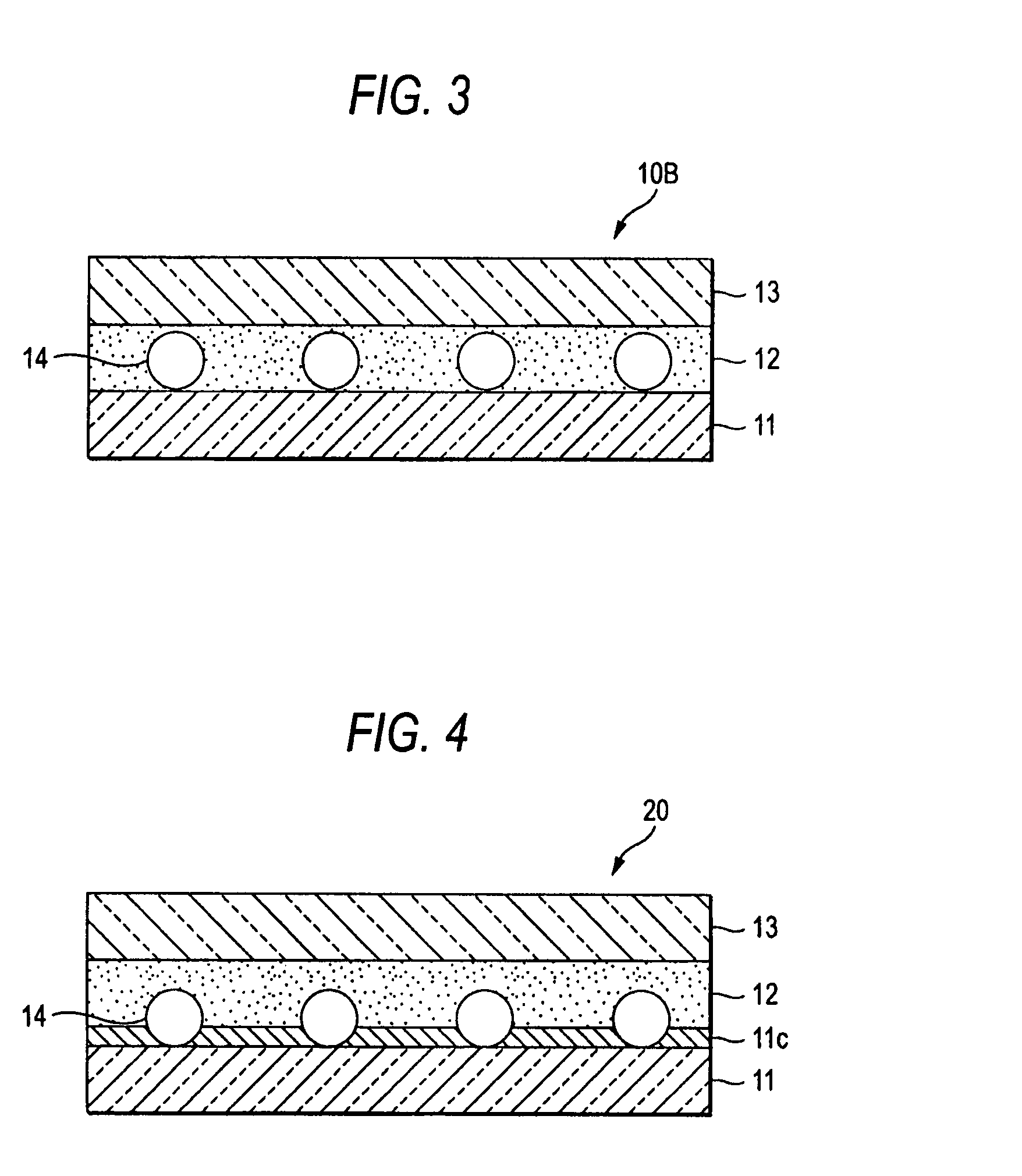Hologram recording medium
a recording medium and hologram technology, applied in the field of hologram recording mediums, can solve the problems of increasing costs, and achieve the effects of stable image display, uneven thickness, and easy shape chang
- Summary
- Abstract
- Description
- Claims
- Application Information
AI Technical Summary
Benefits of technology
Problems solved by technology
Method used
Image
Examples
example 1
[0098]A sample of the hologram recording medium 10 of the configuration as illustrated in FIG. 1 was prepared under the following condition.
[0099](S41) First of all, a polycarbonate film having a thickness of 100 μm was prepared for each of the lower transparent substrate 11 and the upper transparent substrate 13; and a solution containing an acrylic monomer, an inorganic or organic polymer, a photopolymerization initiator and an additive for adjusting a surface tension was coated on one of principal planes of each polycarbonate film and cured by ultraviolet light to form an acrylic hard coat agent layer. There were thus prepared the first protective layers 11a and 13a. Also, the surface of each of the lower transparent substrate 11 and the upper transparent substrate 13 opposite to the surface on which each of the protective layers 11a and 13a was formed was subjected to the same processing. There were thus formed the second protective layers 11b and 13b.
(S42) Next, a crosslinked ...
example 2
[0109]A sample of the hologram recording medium 10B of the configuration as illustrated in FIG. 3 was prepared under the following condition.
(S51) First of all, a PET film having a thickness of 100 μm as the lower transparent substrate 11 and a polycarbonate film having a thickness of 100 μm as the upper transparent substrate 13 were prepared, respectively.
[0110](S52) Next, a crosslinked acrylic particle (fine particle 14) having a refractive index of 1.5 and an average particle size of 30 μm, which had been subjected to antiswelling processing, was prepared ((1) 10 parts by weight, (2) 5 parts by weight, (3) 1 part by weight, and (4) 0 part by weight). Each of the crosslinked acrylic particles was mixed with 100 parts by weight of a solution prepared by adding a radical polymerizable monomer or cation polymerization monomer recording material as a photopolymerization material in a methyl isobutyl ketone solvent and stirred. There were thus prepared dispersion solutions.
[0111]Each o...
PUM
 Login to View More
Login to View More Abstract
Description
Claims
Application Information
 Login to View More
Login to View More - R&D
- Intellectual Property
- Life Sciences
- Materials
- Tech Scout
- Unparalleled Data Quality
- Higher Quality Content
- 60% Fewer Hallucinations
Browse by: Latest US Patents, China's latest patents, Technical Efficacy Thesaurus, Application Domain, Technology Topic, Popular Technical Reports.
© 2025 PatSnap. All rights reserved.Legal|Privacy policy|Modern Slavery Act Transparency Statement|Sitemap|About US| Contact US: help@patsnap.com



